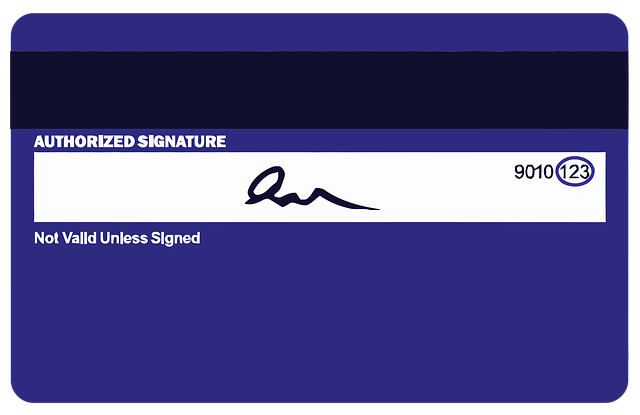Understanding equipment loan requirements is crucial for industries seeking financing. Lenders assess financial health through reviews of revenue projections, debt-to-equity ratios, and cash flow stability, using financial statements as vital tools. Key documentation includes detailed records, business history, and collateral. Strong profitability and liquidity are essential for securing favorable terms, with seasonal fluctuations or high equipment depreciation potentially leading to stricter criteria. Lenders must tailor their assessments to industry-specific needs, such as project timelines in construction or sanitation standards in medical financing. The creditworthiness assessment involves analyzing financial statements to gauge solvency, while collateral and security measures protect lenders from defaults. The loan application process includes a thorough review of financial statements and business plans to make informed decisions.
“Unleashing Industrial Growth through Equipment Loans: A Comprehensive Guide
In today’s competitive landscape, equipment loans are pivotal for industries aiming to expand and innovate. This article serves as a compass, guiding you through the intricate qualifications and processes for securing these vital financial tools. From understanding loan requirements to navigating the role of financial statements, we demystify industry-specific criteria and creditworthiness assessments. By exploring collateral measures and providing a step-by-step application guide, this resource empowers businesses to access funding, fuel growth, and thrive.”
- Understanding Equipment Loan Requirements: An Overview for Industries
- Financial Statements: Key Documents in Equipment Loan Qualification
- Industry-Specific Criteria: A Deep Dive into Qualifications
- Creditworthiness Assessment: Evaluating Borrower Fitness
- Collateral and Security Measures: Protecting Lender Interests
- The Loan Application Process: Step-by-Step Guide for Industries
Understanding Equipment Loan Requirements: An Overview for Industries

Understanding equipment loan requirements is essential for industries looking to secure financing for their operations. These requirements vary across sectors, but they typically involve a thorough review of a company’s financial statements and business plans. Lenders assess factors such as revenue projections, debt-to-equity ratios, and cash flow stability before agreeing to loan terms.
For various industries, including manufacturing, construction, and healthcare, lenders often demand detailed financial records, business history, and collateral to mitigate risks. Strong financial statements showcasing profitability and liquidity are crucial for securing favorable loan conditions. Additionally, industries with seasonal fluctuations or high equipment depreciation may face stricter lending criteria, requiring robust planning and documentation to navigate these challenges effectively.
Financial Statements: Key Documents in Equipment Loan Qualification

Financial statements are indispensable documents that serve as a window into a company’s financial health, playing a pivotal role in equipment loan qualification processes across various industries. These statements, typically encompassing balance sheets, income statements, and cash flow statements, provide lenders with critical insights into a borrower’s stability, profitability, and liquidity. By analyzing these documents, lenders can assess the risk associated with lending money for equipment acquisition, ensuring that funds are extended to financially sound entities capable of repaying their debts.
For instance, balance sheets offer a snapshot of a company’s assets, liabilities, and equity at a specific point in time, revealing its overall financial position. Income statements provide a picture of revenue generation and expense management over a defined period, shedding light on operational efficiency and profitability trends. Cash flow statements, on the other hand, demonstrate how cash is generated, distributed, and utilized within a business, which is crucial for understanding a company’s ability to meet its financial obligations, including equipment loan repayments.
Industry-Specific Criteria: A Deep Dive into Qualifications

In the dynamic landscape of equipment loan qualifications, each industry brings its unique set of criteria, shaped by specific operational needs and risk profiles. Beyond the standard financial considerations, lenders must delve into industry-specific nuances to ensure informed lending decisions. For instance, construction loans often require meticulous examination of project timelines, material costs, and safety protocols, given the volatile nature of building sites. Conversely, medical equipment financing demands a close look at facility sanitation standards, regulatory compliance, and the life expectancy of the gear being loaned—factors that significantly influence both risk assessment and repayment capabilities.
Analyzing financial statements is paramount, but lenders must also understand industry-unique factors like market fluctuations, seasonal demands, and technological advancements. For agricultural loans, weather patterns and crop yields become critical variables. In contrast, technology startups may hinge on innovation and market disruption as key performance indicators. This deep dive into industry-specific criteria ensures that loan qualifications are not one-size-fits-all but tailored to the nuances of each sector, fostering a more robust and mutually beneficial lending ecosystem.
Creditworthiness Assessment: Evaluating Borrower Fitness

In the realm of equipment loan qualifications, a crucial step is the creditworthiness assessment, which scrutinizes the borrower’s financial fitness. This involves examining the prospective borrower’s financial statements to gauge their solvency and ability to repay the loan. Key metrics such as revenue, cash flow, debt obligations, and overall financial health are analyzed through these statements. Lenders use this information to assess risk and determine if the borrower can consistently meet their financial obligations, including the repayment of the equipment loan.
Financial statements provide a comprehensive view of a company’s financial standing, enabling lenders to make informed decisions. By delving into these documents, they can identify trends, predict potential issues, and evaluate the stability of the borrower. This meticulous process ensures that loans are extended to responsible entities capable of fulfilling their repayment duties, thereby fostering a robust lending environment for various industries.
Collateral and Security Measures: Protecting Lender Interests

When it comes to equipment loan qualifications, understanding the role of collateral and security measures is paramount for both lenders and borrowers across various industries. To mitigate risks, lenders often require robust collateral—assets that can be seized and sold in case the borrower defaults on their obligations. This can include real estate, inventory, or even financial statements, which serve as a powerful tool to assess creditworthiness and safeguard lending institutions’ interests.
In many cases, the value of the equipment being loaned must be secured against potential losses. Lenders carefully evaluate the collateral’s worth and its potential to cover any outstanding debts in order to ensure they have a safety net. Financial statements play a crucial role here, providing insights into a company’s financial health and ability to repay loans. By examining these statements, lenders can make informed decisions on loan amounts and terms, balancing the need to support businesses while protecting their own financial interests.
The Loan Application Process: Step-by-Step Guide for Industries

The Loan Application Process: A Step-by-Step Guide for Industries
For industries seeking equipment loans, understanding the application process is crucial. It typically begins with a thorough review of the borrower’s financial statements, including income, expenses, and existing debt obligations. This step ensures lenders can assess the borrower’s financial health and capacity to repay the loan. Lenders will also evaluate the type of equipment being purchased, its intended use, and the expected return on investment.
Next, borrowers must provide detailed documentation supporting their application. This may include business plans, permits, insurance policies, and references. Lenders carefully scrutinize these documents to gauge the project’s viability, the borrower’s credibility, and the potential risks involved. Following this due diligence, lenders will decide whether to approve the loan, negotiate terms, or deny the request based on their risk assessment.














